An easy recipe for a favorite New Orleans French “donut” beignet recipe. Made with eggs, flour, yeast, and butter – topped with your choice of powdered sugar or cinnamon and cardamon. Best served immediately with chocolate dipping sauce!
What is a Beignet?
Beignets are a delicious treat that originated in France. They’re made of a light and airy dough, which is deep-fried and then dusted with powdered sugar. They’re best served warm, right after they’ve been cooked.
They are called many different things – and we’d argue that these synonyms all correctly describe a beignet: beignet pastry, beignet dessert, beignet french donut, beignet puff pastry.
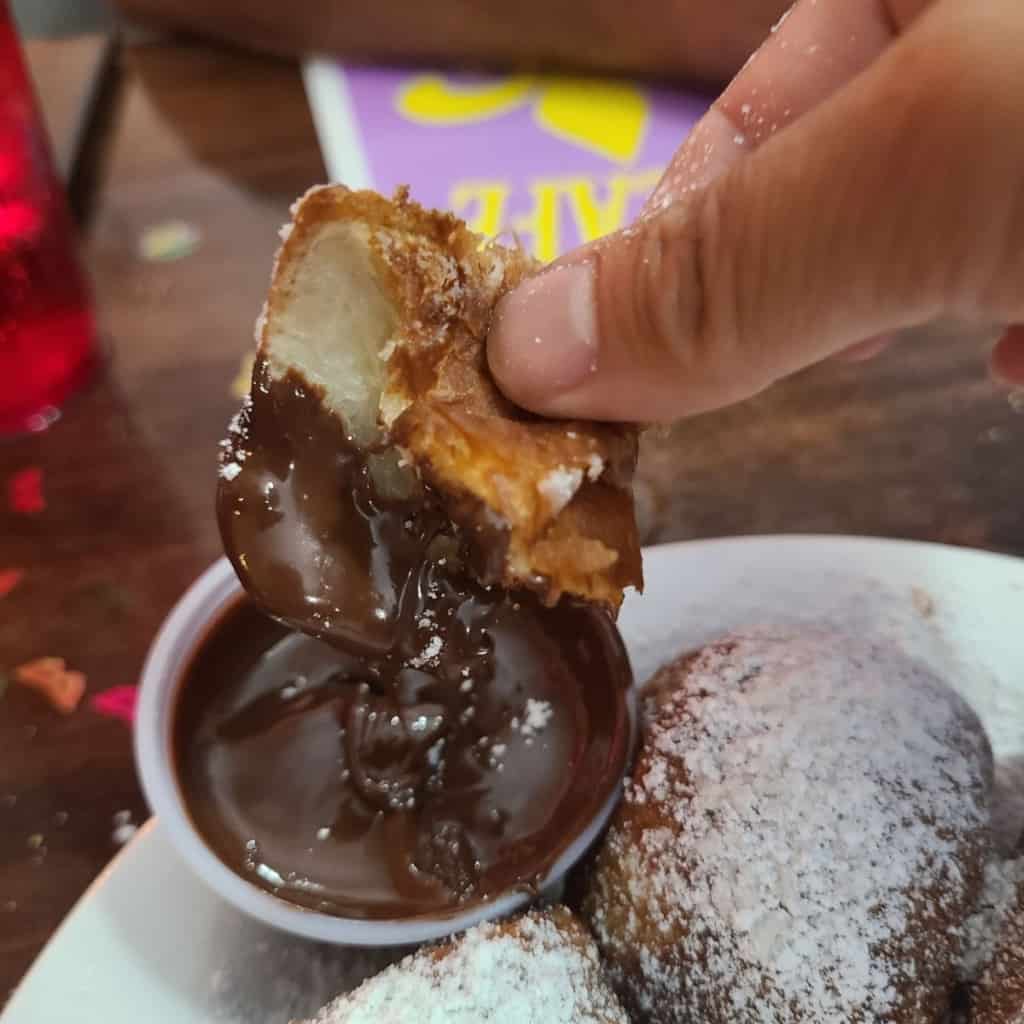
Beignets have become an iconic part of New Orleans’ culinary scene, though they can be found all over the city. They’ve also become popular in other parts of Louisiana, as well as in parts of Texas and Mississippi.
The name “beignet” means “fried” in French, and it refers to the way these treats are made: by frying them until they’re golden brown on the outside, but still fluffy and light on the inside.
Beignet Main Ingredients
They are made from a variation of four main ingredients: flour, yeast, sugar, and eggs. The batter is similar to pancake batter but is also seasoned with salt then deep fried. The result is a puffy, crispy pastry that can be eaten plain or dipped in your favorite topping!
What Does a Beignet Dough Taste Like?
A beignet tastes like a fluffy plain donut that is crispy on the outside but fluffy and (more airy) on the inside. Topped with powdered sugar, it adds just the right amount of sweetness. It is best served with a side of chocolate dipping sauce, although you may also use raspberry sauce or jam – or both! Who says you can’t mix dipping sauces?
New Orleans Beignet
New Orleans is known for this super fluffy deep fried goodness – but did you know that it also is a Kenyan treat? What’s the major difference?
Us Americans like to dust it with alot of powdered sugar goodness whereas the Kenyans like to dust it with just a little sprinkling of cinnamon and cardamon.
We say, you should try both! This easy beignet recipe will walk you through exactly how to create that perfect beignet shape and fluffy-on-the-inside crispy-on-the-outside French treat.
How you top it, is up to you! If you’re using powdered sugar, don’t be afraid to load it up! We tested it with just a little sprinkling, and a version where it’s completely covered and we find the completely covered version to be the best tasting!!! If you’re using cinnamon – go light.

Beignets Vs. Donuts
Beignets and donuts are both delicious pastries made with a deep-fried yeast dough, but there are a few key differences.
First, the ingredients are different. Beignets are made with flour, water, sugar, yeast, and powdered milk—and that’s it! No eggs or other additives. The donut, on the other hand, contains a variety of other ingredients like eggs and butter.
In terms of cooking methods, beignets are typically fried in hot oil until they turn golden brown before being coated in confectioner’s sugar and served warm. Donuts can be prepared using either deep-frying or baking methods; however, it’s important to note that beignets are fried in oil whereas donuts are baked in an oven.
Finally, there is a difference in taste: when prepared correctly, beignets should have a light texture similar to a sponge cake while donuts tend to be denser due to their higher fat content (both from the oil used during frying).

Beignet Vs. Funnel Cake
There are a lot of similarities between beignets and funnel cakes, but there are also some key differences. Both desserts are made from a batter that is fried in oil and then covered in powdered sugar. However, the batter used in each dessert is slightly different, and the cooking method is also different.
Beignets are made with a yeast-based dough that is deep-fried, while funnel cakes are made with a more traditional pancake batter that is fried in oil. Beignets also have a richer flavor than funnel cakes because they’re made with richer ingredients like butter, eggs and milk—they’re more decadent!
When it comes to taste, beignets are usually sweeter than funnel cakes, but they can vary depending on what type of powdered sugar you use on top of them (cane or beet). You can even get creative with your toppings by using flavored syrups like caramel or chocolate sauce instead of just plain white sugar!
Beignets in Air Fryer
Can you cook a this recipe in an air fryer? Absolutely! Preheat your air fryer to 350 degrees, spray air fryer with oil. At this step you may want to brush your beignets with a little melted butter. Place butter side down on your tray or basket and brush again on this side as well.
Leave in air fryer for 6-7 minutes until it starts to brown, flip over and cook for another 6-7 minutes.
Beignets Dipping Sauce
If you’re looking to make the most of your beignets experience, consider dusting them in powdered sugar and dipping them in raspberry sauce, or chocolate sauce. Or, if you’re feeling adventurous, try combining both (this is Brian’s favorite way to eat these! Janine likes to switch back and forth one at a time)
You can find a wide variety of sauces at your local grocery store—we recommend starting with raspberry and chocolate, then trying out different combinations.
African Beignet – Where it Came About
As we’ve continued to explore the multitude of the world’s cuisines here, it’s been fascinating to observe how truly pervasive the overall “cultural intermingling” has been.
Even though it’s been chic of late to talk about how globalized our world has become, in truth different cultures, empires and societies have been rubbing elbows with one another since pretty much time eternal.
And nowhere is there a more indicative example of this as in Kenya, and its food serves as a useful proxy for measurement here.
You need to look no further than foods like mahamri, chapati and samosas to see how influential the external world has been on local eating and daily life.

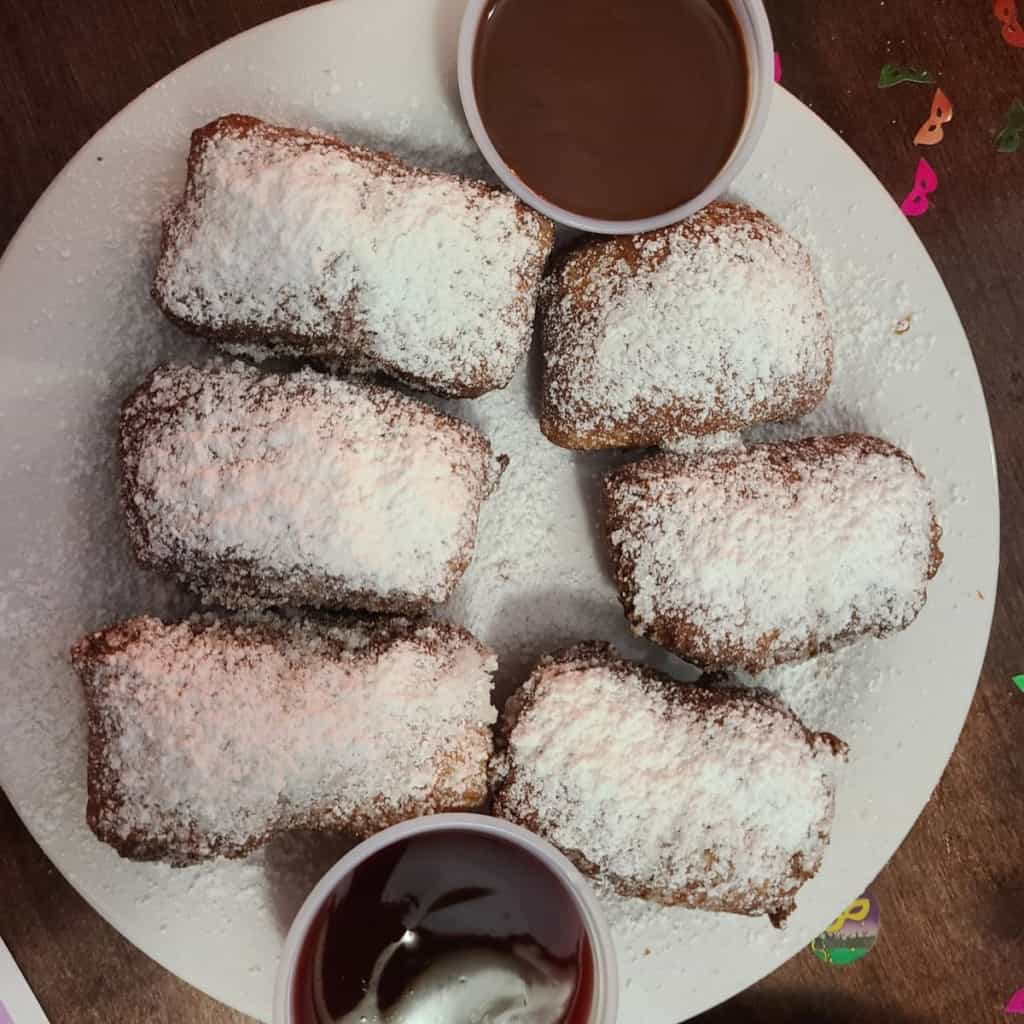
Mahamri, the Kenya-Uganda Railway & Indian Laborers
While this particular story commences in the fairly recent 19th century, we’d be remiss if we didn’t at least highlight Kenya’s rich history and its role as part of the East African Swahili Coast (which we discussed over a serving of Tanzanian kashata).
From as early as the 1st century AD, the Kenya coast – and particularly towns like Mombasa – have been pivotal cultural and economic hubs for the entire Swahili coast.
Alas, the power of these coastal cities is also the reason why they were so prized by outsiders… many of whom went to great lengths to control it for themselves. Especially in the past few centuries, this play for the regional power has come to mean different forms of colonialism from outside Empires.
For Kenya as a whole, however, no ruling power made as cosmic changes to its trajectory as the British did.
A Revolving Door of Influences
The 19th century proved to be a fairly tumultuous time for the lands that would come to be modern day Kenya.
To this point, much of the coastal regions had already been controlled by what seems like a revolving door of outsiders. First it was the Portuguese in the 16th century, who were then ousted by the Omani Arabs shortly thereafter.
The Omanis, however, struggled mightily to extend from the Swahili coastal areas into the interior lands inhabited by local tribes like the Maasai and the Kikuyu. It was only through an intensified slave trade that the Omanis made some more headway inward and en route to a more consolidated stronghold of the region.
Yet this consolidated power proved to be fairly short-lived. For most of the 19th century, the Europeans had already been exploring and mapping – through informal expeditions and missionary work – much of interior African lands across the entire continent. Still, the Europeans controlled no more than 10% of Africa as recently as the late 1870s.
This “informal imperialism” did transition, however, into a more concerted and formalized effort to develop a stronger European colonial presence. Hoping to develop more favorable trade and economic conditions for themselves, a coalition between the Germans, British, French and others led to what is now called the “Scramble for Africa” between 1881 and 1914. In the case of Kenya, this scramble led to the Germans and British in 1885 seizing all Omani coastal ports and almost entirely squeezing the Arabs out of the region.
And after the Scramble came the Partition. In a rare show of true diplomacy, the Germans and the British (and to a much lesser extent, the French) agreed in 1886 to divide up their newly conquered lands along an arbitrary line drawn down the 1° S latitude line, a line which remains as the border between Kenya and Uganda today.
Following their successful “squeeze-out,” the British Empire actually had little intention of fully colonizing their new prize lands. Rather, the Empire assigned a commercial company, the Imperial British East Africa Company, to take active responsibility in developing the lands and trade industries for what had become lucrative and high-demand African goods.
British Kenya
Here we’re going to fast forward through several years of “Imperial squabbles” between the French, Germans and the British in Uganda. Just know that by 1894, the British had essentially wrested away sovereignty of Uganda from the Germans.
By the time of the Ugandan arrival, it was also becoming increasingly clear to the Empire that the Company was struggling to fulfill its obligations. With a pretty forced hand, the British Empire thus formally annexed the lands under Imperial control and named it the East African Protectorate.
Kenya would remain under British control – first in this Protectorate then as a crown colony after 1920 – until its own independence in 1963.
The Kenya-Uganda Railway
With their newly annexed Ugandan lands, the British Empire embarked upon a massive project to create a connecting railroad traversing Kenya and Uganda. The underlying hopes for the Empire here were that a steam-powered railroad could help transport both people (the British had abolished the practice of slavery), heavy equipment and soldiers into their new lands, thereby solidifying their domination of the greater East African region.
The British commissioned the building of this 660 mile behemoth of a railroad – intending to connect the coastal Kenyan city of Mombasa all the way to an endpoint of Uganda’s Kisumu near Lake Victoria – in 1895. It would take 6 years and nearly 5 millions pounds (~150 million in today’s money) to complete.
For such an ambitious undertaking, the British needed a massive influx of manual labor, for which they turned to another of their crown colonies, British India. All told, there were more than 32,000 British Indians brought in to work on the project. More impressively, however, was that many of the Indians voluntarily settled in Kenya following the completion of the project, a move that gave rise to major cultural influences for today’s Kenya (and for mahamri).
Indian Culinary Influence
Almost overnight, there was a huge (and in some cases, more influential) Indian sub-community living alongside the British and the indigenous Kenyan peoples. Many Indians set up “dukawallas” and became the artisans, traders, administrators, clerks and held many more commercially-oriented positions.
As an integral part of the commercial backbone of Kenya, there grew an eventual but very significant Indian influence on the local Kenyan cuisine. Ingredients like fresh chilis and spices like curry, cumin and especially coriander added a much needed diversity to what had previously been a “sustenance-driven” cuisine predicated on bland, starchy ingredients and hearty stews.
And, of course, we shan’t forget the Indian-influenced winning combination of mahamri with a nice cup of hot chai.
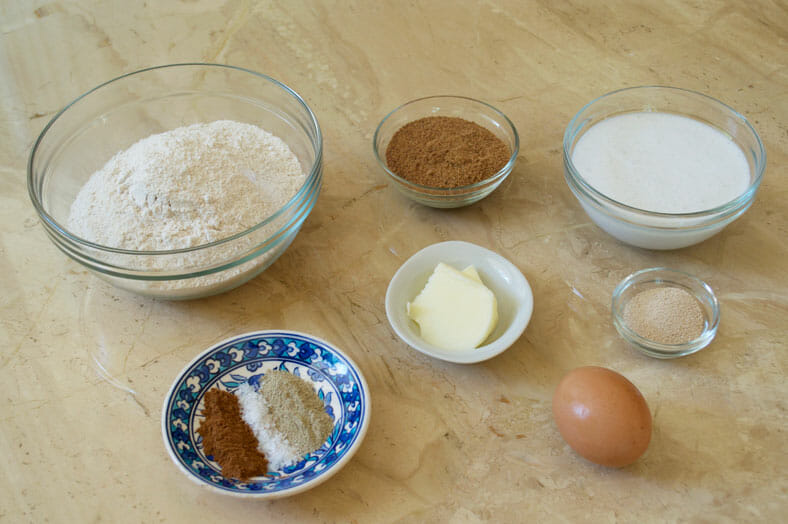
About the Recipe
Before diving into the recipe itself, we should point out what might otherwise be a small point of confusion. While we refer to this recipe here as mahamri, it also has another name in mandazi. Mahamri is the term more commonly used in urban areas, whereas mandazi is the term used in rural communities.
Regardless of whether it’s mahamri or mandazi to you, they both translate roughly into the same meaning in English: donut without a hole.
Here we might disagree a little with the literal definition of the word. It might be a little more of a formality, but we consider mahamri to be eerily similar to some delicious beignets you might find in New Orleans, for example.
However you want to typecast it, making these mahamri is indeed very easy. The first step to making these Kenyan beignets/donuts is to start with your dough.
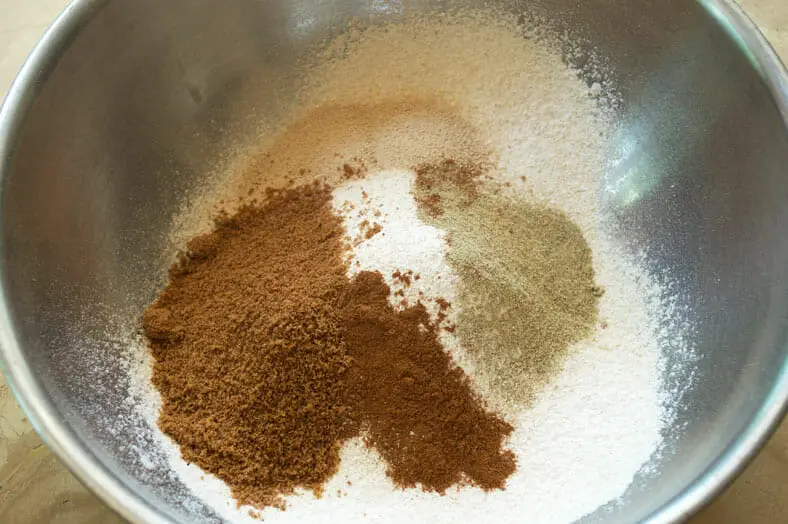
Staying true to its strong Indian influence, into the dough you’ll add touches of ground cardamom and cinnamon (the latter is optional). Even in the slightest of amounts, these spices make all the difference in flavor after you’ve fried your mahamri up. And with ingredients like butter, egg and coconut milk, you can readily expect to get a much more decadent and richer dough than you would if you were to use water.
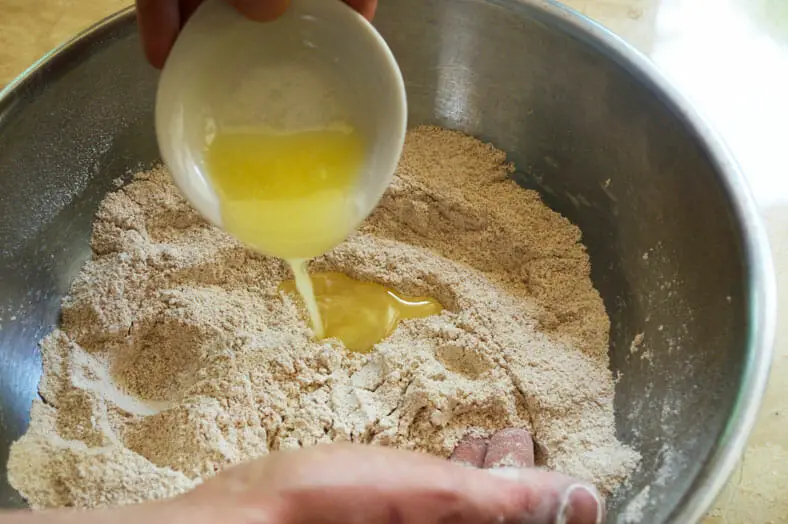
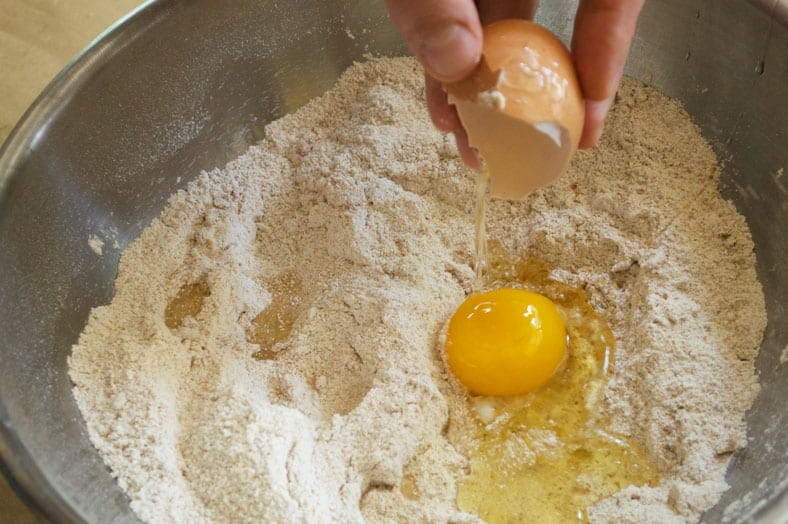
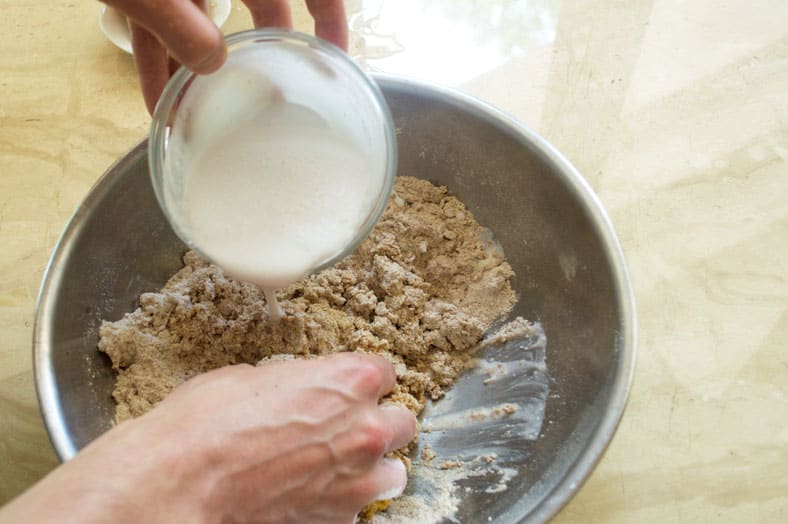
You’ll let the dough sit for at least 1-2 hours once you’ve put it together to allow the yeast and dough to rise. Once risen, you’ll take it out, knead it and roll it flat until you have at most at a ~1 inch thickness.
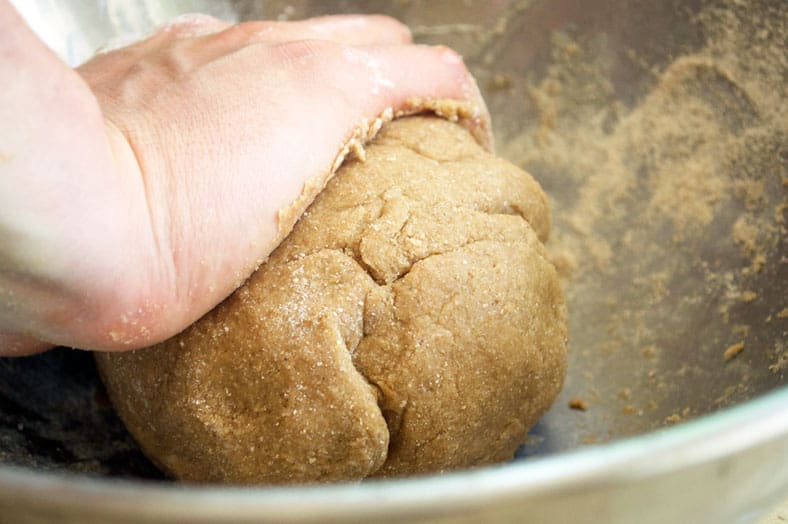
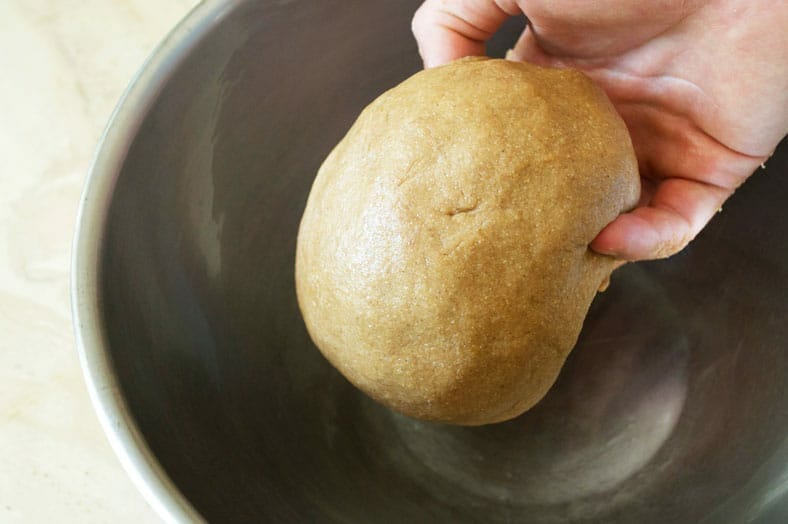
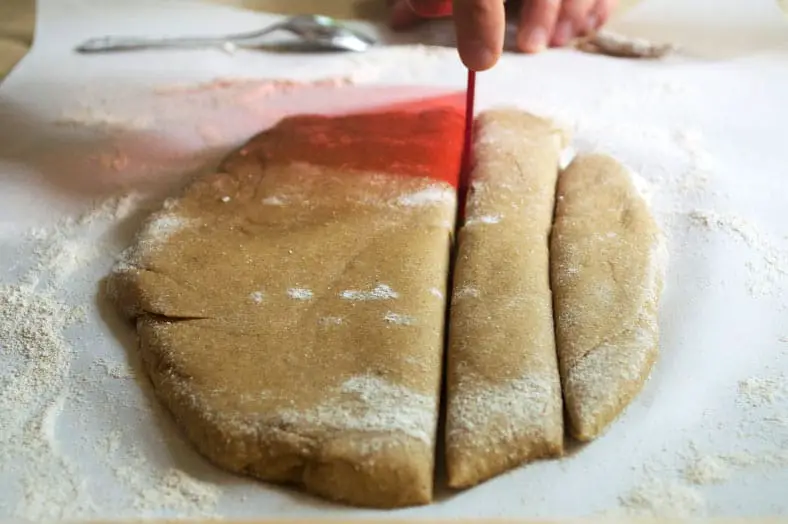
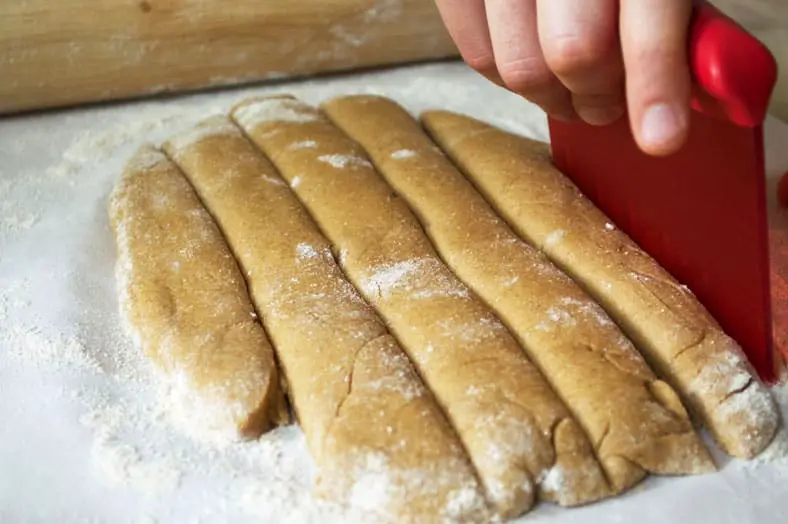
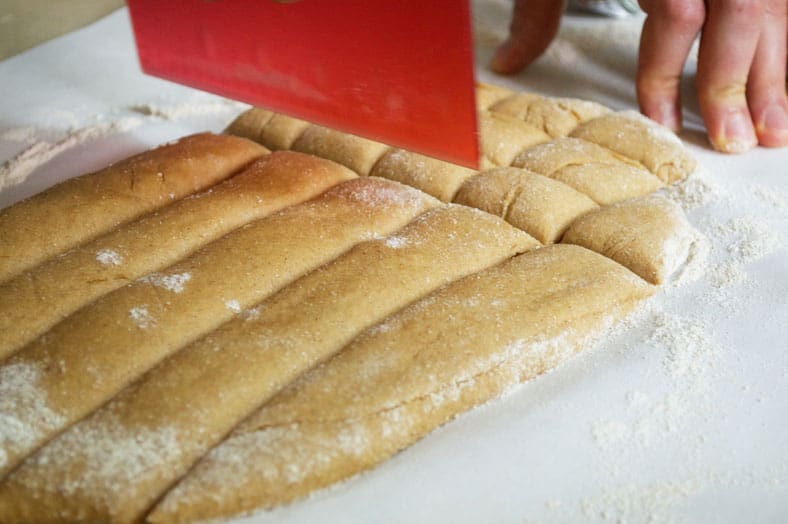
And now comes the frying! Cut your pieces of mahamri dough into fry-able squares, which you’ll then pop into sputtering pot of oil. These beignets don’t take very long at all to fry (as little as 30 seconds per side sometimes), but what you’ll notice is how quickly they puff up once they have. You can thank the yeast for this major puffing.
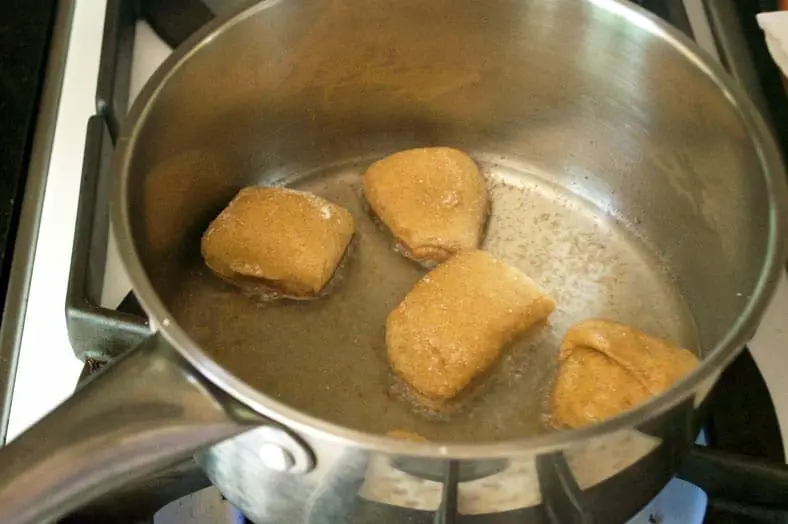
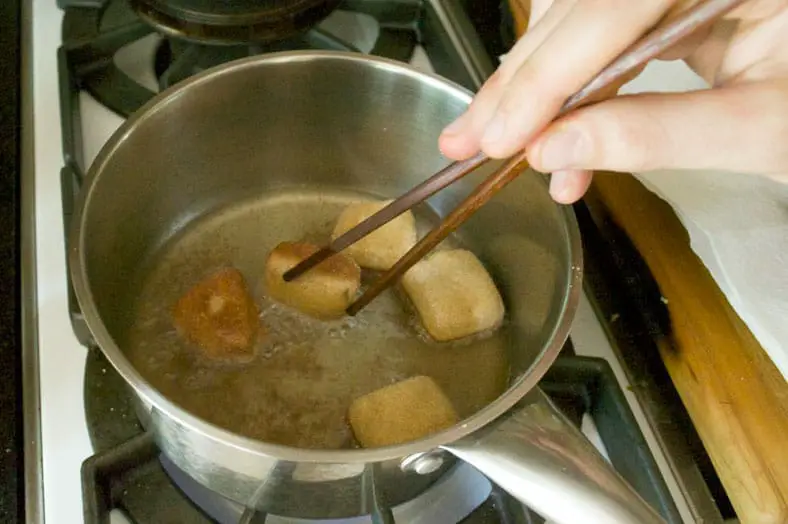
After your mahamri are fully fried, you simply set aside to let them cool as you tend to your remaining pieces of dough. When it comes time to enjoy, you can either sprinkle a little powdered sugar on top or you can simply leave them be. The cardamom flavor in the dough makes them flavorful enough as is… at least in our opinion.
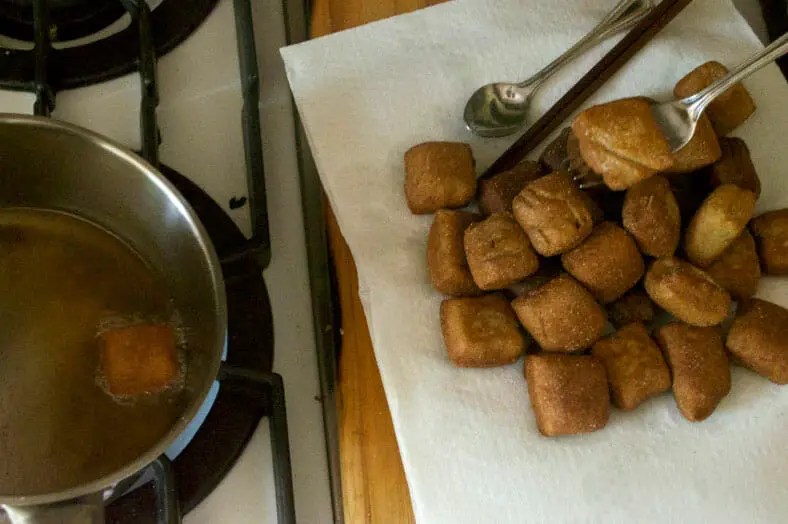
Our Take on the Recipe
Never mind the fact that the site is called All Kenyan Recipes, but we really enjoyed the coconut leanings of what became our original mahamri reference recipe.
Perhaps the largest adjustment we made came more in the sizing of our mahamri. Rather than having massive triangular puffed pockets of fried dough, we opted instead to made smaller more beignet-sized versions of the delectable donut treat.
Ingredient-wise, we did add a touch of cinnamon as well as swap in grass-fed butter in place of the recommended ghee. The reason for the latter was more that we had it more readily available. We actually wouldn’t have been opposed to using ghee had we had some more readily available.
As for frying, rather than use vegetable oil, we stayed in a coconut state of mind. Since most of the mahamri recipe was coconut-heavy as is – including a coconut sugar swap we did as well, per usual – it seemed an easy switch to fry with the slightly healthier coconut oil instead as well.
Other than that, the recipe is simple and straightforward enough that it needs very little adjusting. What you get in the end with mahamri is a delicious breakfast (or midday snack) that pairs particularly well with a tea or chai.

Enjoy!
How would you prepare your mahamri? Comment below!
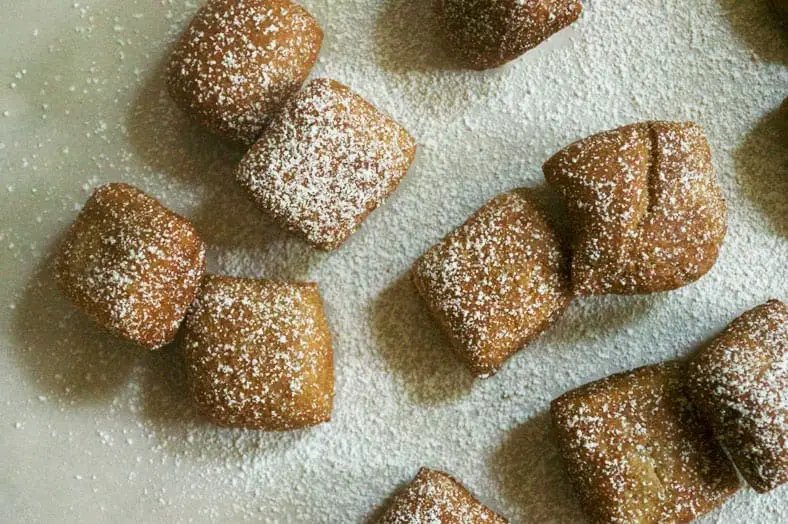


😉
YUM! these sound incredible! You know, all of your recipes make me want to try new things with food, and that is incredible.
Woohoo! That makes us so happy to hear, Trish 🙂
play free keno no download [url=http://www.casinowild-24.com/free-casinos/free-keno]play free keno no download[/url] .
Наборы посуды для кухни: лучшее решение для новоселов
посуда для кухни купить [url=https://www.lenta.ru/conf/krichever/]https://www.lenta.ru/conf/krichever/[/url] .
Hi there,
My name is Mike from Monkey Digital,
Allow me to present to you a lifetime revenue opportunity of 35%
That’s right, you can earn 35% of every order made by your affiliate for life.
Simply register with us, generate your affiliate links, and incorporate them on your website, and you are done. It takes only 5 minutes to set up everything, and the payouts are sent each month.
Click here to enroll with us today:
https://www.monkeydigital.org/affiliate-dashboard/
Think about it,
Every website owner requires the use of search engine optimization (SEO) for their website. This endeavor holds significant potential for both parties involved.
Thanks and regards
Mike Durham
Monkey Digital